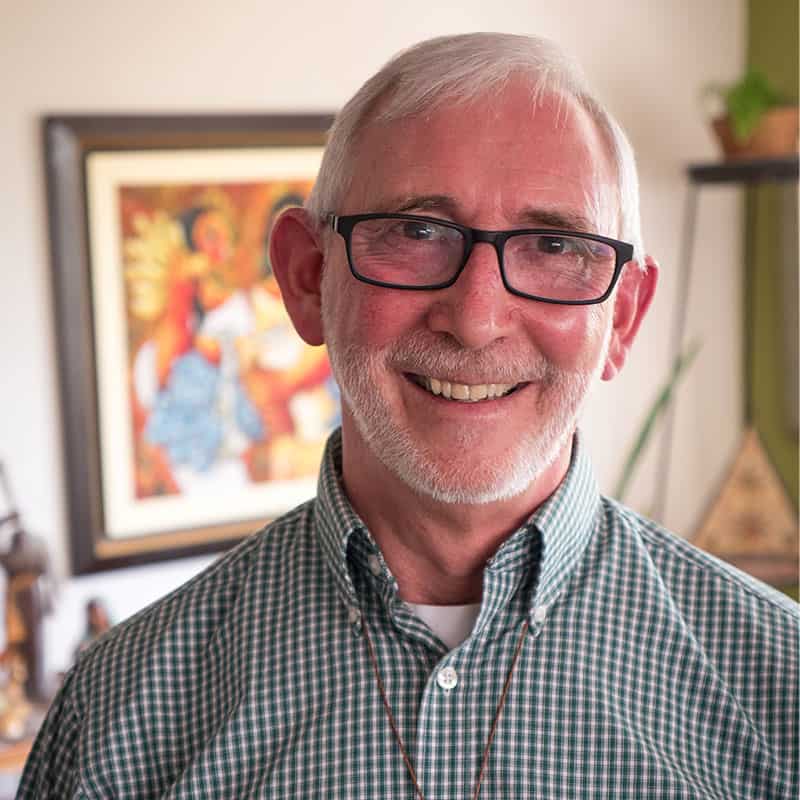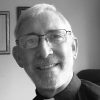A Maryknoll priest reports how the COVID-19 virus
changed life in his apartment building in Lima, Peru
“Padre José, turn on channel 9; your apartment building is in the news!”
This is the message my secretary, Paola, sends me on WhatsApp.
I glance out the window of the 11th floor apartment that I rent. Below is a horde of reporters, police and health-department personnel in white hazmat suits.
I turn on the TV.
A masked journalist is breathlessly reporting the death of a 68-year-old man who died alone in his apartment. He is the second person in Peru to succumb to COVID-19. It’s Thursday, March 19th. Three days before, Martin Vizcarra, the president of Peru, announced a countrywide, stay-at-home policy. Now, Santa Ana–the name of the apartment building–is placed under full lockdown.
Within hours, the president of the owners’ association and her board create a WhatsApp group for the nearly 250 residents of Santa Ana. The transformation is almost immediate: from resident strangers to neighborly friends…with names!
There’s Sandro, a lawyer on the second floor, who dishes out very helpful legal advice pertinent to the situation at hand; Pancho, a veterinarian on the 7th floor, who heads the “Buyers’ Club” organizing grocery orders and deliveries; and Fiorella, a pastry maker and next-door neighbor, who makes me a lemon pie. She’s my favorite! In turn, I bless two medals of the Virgin Mary that are cupped in her gloved hands.

After a man died of the COVID-19 virus in the Santa Ana building where he lives, Father Joseph Fedora saw resident strangers become neighborly friends. (Nile Sprague/Peru)
And, of course, there’s me, the resident priest.
I’m Santa Ana’s unofficial virtual chaplain. Even though I’m somewhat known in the building–I’ve been living here for over 12 years–I formally introduce myself and offer my services. I assure everyone that I will be offering my daily Mass for them and invite them to send me any intentions they may have.
The intentions flood in: a 59th wedding anniversary, a mother’s death, an ill uncle, a doorman infected with the virus, and an anxious woman wondering if she is also infected. And a Mass for Eduardo, the resident whose death on the 6th floor changed our lives.
The pastoral outreach extends beyond my tiny chapel. I take calls and respond to private messages…there’s a lot of fear and uncertainty. People are hungry for reassurance. Scripture is a tremendous source of comfort, as are prayers. Just listening often is enough.
I compose short daily messages of hope and post them on WhatsApp; they seem to resonate given the chorus of “Amen” that follows.
Strain in our solidarity begins to show two weeks into lockdown. It’s to be expected. A negative comment, a wounded ego, and the inevitable exodus from the WhatsApp group. Time to start over, and we do. It doesn’t take long to pick up where we left off.
Father Richard Rohr, OFM, wrote: “Transformed people transform people.” The residents of Santa Ann have been transformed. Now the question is will we, in turn, transform others? I think we already are.
Lockdown remains until Easter Sunday. To get there, we must carry this invisible cross. It weighs heavily, but with each step–and in step with the global community–we will arrive transformed.
The Easter Event continues.
Featured Image: In a file photo, Maryknoll Father Joseph Fedora celebrates Mass in his living room in Peru. (Sean Sprague/Peru)

